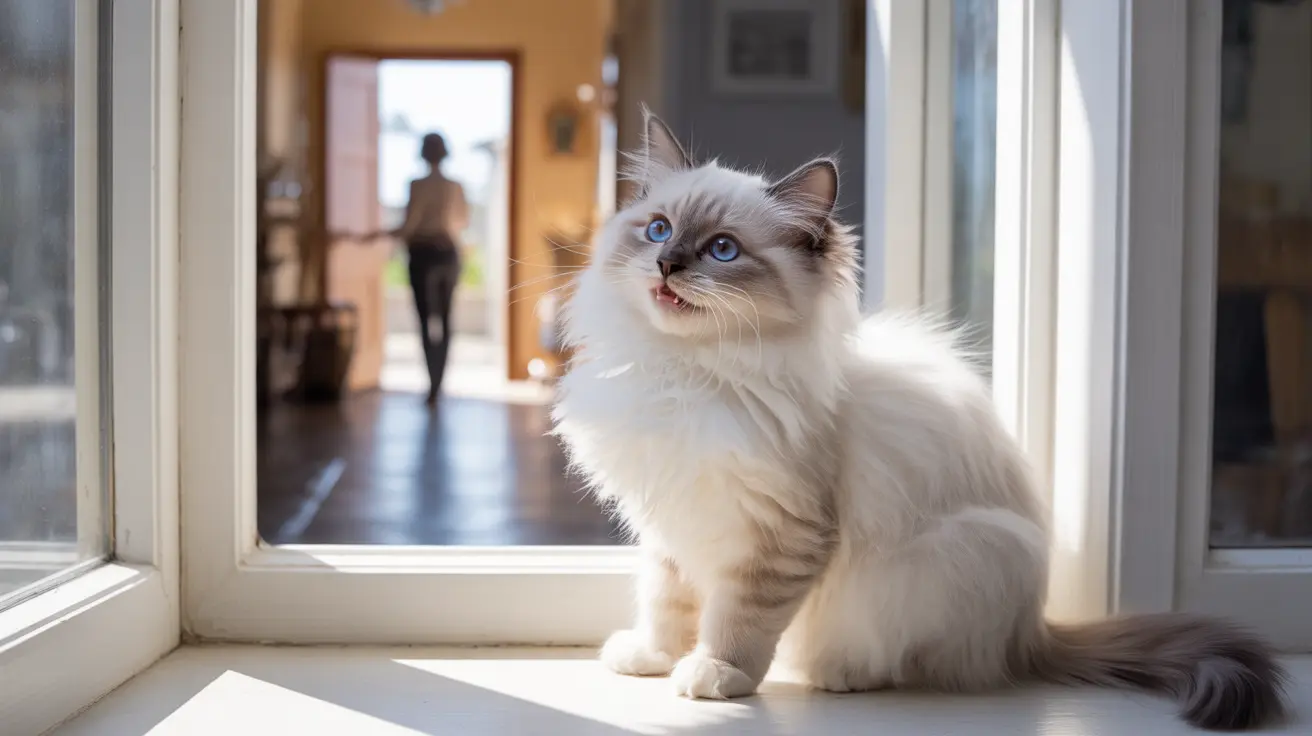Understanding Ragdoll Cat Vocalizations
Compared to more talkative breeds like the Siamese, Ragdolls generally maintain a quieter presence in the home. They typically communicate through soft, melodic sounds rather than loud or persistent meowing. Their vocal repertoire includes gentle chirps, subtle trills, and quiet meows that they use strategically to express their needs or emotions.
Each Ragdoll has their own unique personality, which significantly influences their vocalization patterns. While some may be more conversational, others might prefer to communicate through body language and physical interaction.
Common Ragdoll Sounds and Their Meanings
Gentle Meows and Chirps
Ragdolls often use soft meows and chirps to greet their owners or request attention. These sounds typically indicate:
- A friendly hello when you return home
- Desire for food or fresh water
- Request for playtime or interaction
- Response to human conversation
Purring and Trilling
These affectionate sounds are common among content Ragdolls and usually signal:
- Happiness and contentment
- Comfort during petting sessions
- Excitement during play
- Social bonding with their human family
Factors That Influence Ragdoll Vocalization
Age and Health
Various factors can affect how vocal your Ragdoll becomes:
- Senior cats may become more vocal due to cognitive changes
- Health issues might trigger increased vocalization
- Physical discomfort can lead to more frequent meowing
- Changes in hearing or vision may impact communication patterns
Environmental Influences
The home environment plays a crucial role in your Ragdoll's vocal behavior:
- Stress or anxiety can increase vocalization
- Changes in routine might prompt more frequent communication
- Multi-pet households may affect how vocal your Ragdoll becomes
- Living space and activity levels can impact their need to vocalize
Managing Your Ragdoll's Communication Needs
Creating a supportive environment helps maintain healthy communication patterns:
- Establish consistent daily routines
- Provide adequate attention and playtime
- Create quiet spaces for relaxation
- Monitor any changes in vocal patterns that might indicate health issues
Frequently Asked Questions
Are Ragdoll cats typically vocal compared to other cat breeds like Siamese?
No, Ragdolls are generally less vocal than breeds like Siamese cats. They tend to communicate through softer, more subtle vocalizations and often rely more on body language to express themselves.
What do the different sounds my Ragdoll cat makes (meowing, chirping, purring) usually mean?
Different sounds typically indicate specific needs or emotions: meowing often signals a request for attention or food, chirping shows excitement or greeting, and purring usually indicates contentment or comfort. Some Ragdolls may also trill to express affection.
Why has my Ragdoll cat become more vocal as it's gotten older or experienced changes?
Increased vocalization with age can be due to various factors, including cognitive changes, physical discomfort, or adaptation to environmental changes. Senior cats may become more vocal due to confusion or seeking reassurance.
How can I tell if my Ragdoll's increased vocalization is a sign of stress or health issues?
Watch for changes in vocal patterns, especially if accompanied by other behavioral changes, changes in appetite, or physical symptoms. Sudden increases in vocalization should be evaluated by a veterinarian to rule out health issues.
What can I do to manage my Ragdoll's attention-seeking meowing or chirping?
Establish regular feeding and play schedules, provide environmental enrichment, and ensure adequate attention during active hours. Avoid reinforcing excessive vocalization by responding only to appropriate communication levels.
Conclusion
While Ragdolls aren't typically known for being highly vocal, their unique communication style combines gentle sounds with expressive body language to create meaningful interactions with their human families. Understanding and responding appropriately to their communication cues helps maintain a happy, healthy relationship with these beloved companions.






